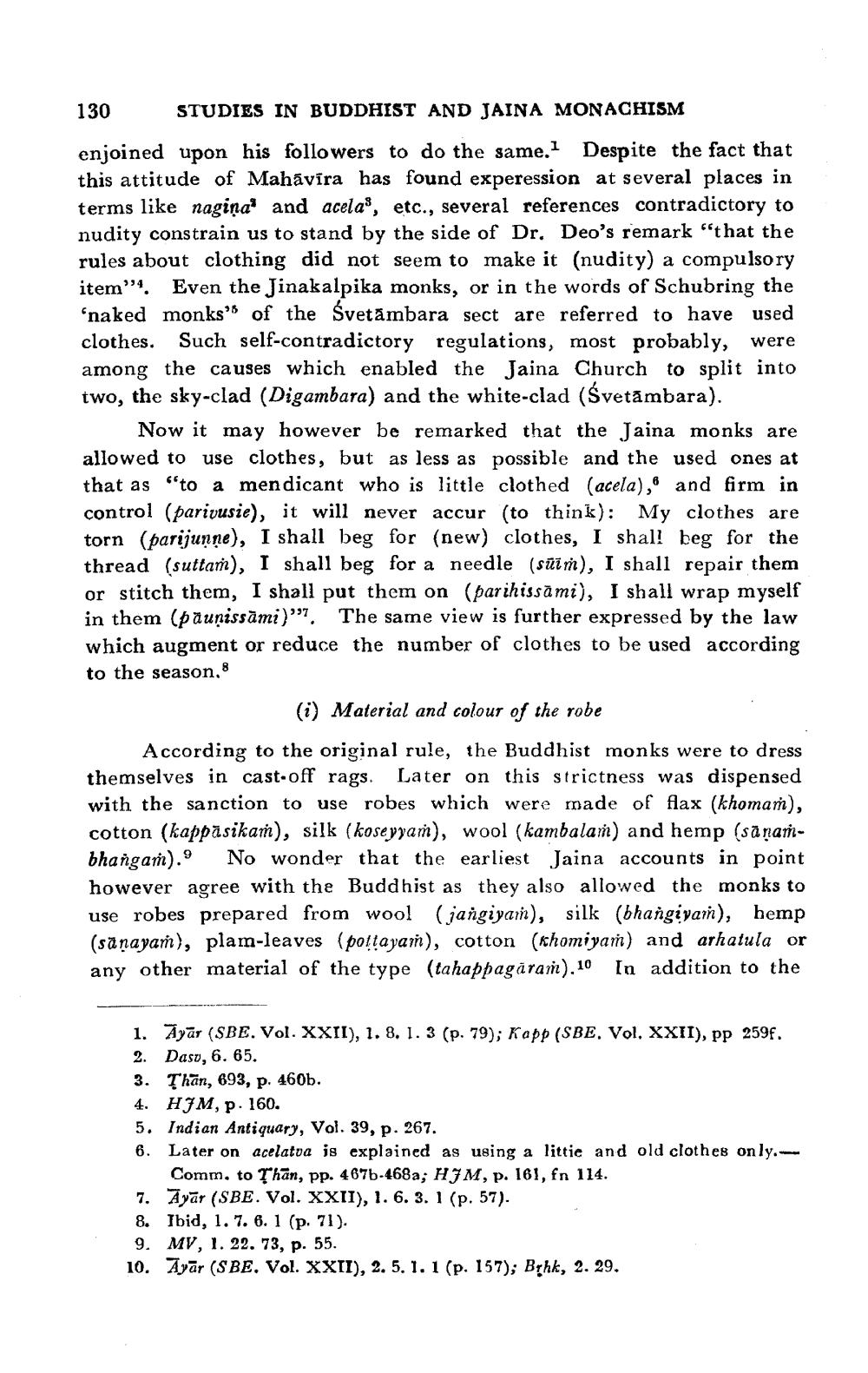________________
130 STUDIES IN BUDDHIST AND JAINA MONACHISM enjoined upon his followers to do the same. Despite the fact that this attitude of Mahāvīra has found experession at several places in terms like nagina' and acelas, etc., several references contradictory to nudity constrain us to stand by the side of Dr. Deo's remark "that the rules about clothing did not seem to make it (nudity) a compulsory item"'4. Even the Jinakalpika monks, or in the words of Schubring the 'naked monks of the Svetambara sect are referred to have used clothes. Such self-contradictory regulations, most probably, were among the causes which enabled the Jaina Church to sp iwo, the sky-clad (Digambara) and the white-clad (Svetāmbara).
Now it may however be remarked that the Jaina monks are allowed to use clothes, but as less as possible and the used ones at that as "to a mendicant who is little clothed (acela), and firm in control (parivusie), it will never accur (to think): My clothes are torn (parijunne), I shall beg for (new) clothes, I shall beg for the thread (suttam), I shall beg for a needle (sūžņ), I shall repair them or stitch them, I shall put them on (parihissāmi), I shall wrap myself in them (paunissāmi)". The same view is further expressed by the la which augment or reduce the number of clothes to be used according to the season.
(0) Material and colour of the robe
According to the original rule, the Buddhist monks were to dress themselves in cast-off rags. Later on this strictness was dispensed with the sanction to use robes which were made of flax (khomaṁ), cotton (kappasikam), silk (koseyyam), wool (kambalaṁ) and hemp (sanambhangan).9 No wonder that the earliest Jaina accounts in point however agree with the Buddhist as they also allowed the monks to use robes prepared from wool (jangiyani), silk (bhangiyan), hemp (sanayan), plam-leaves (pottayam), cotton (Khomiyam) and arhatula or any other material of the type (tahappagaram).10 In addition to the
1. Ayar (SBE. Vol. XXII), 1. 8. 1.3 (p. 79); Kapp (SBE. Vol. XXII), pp 259f. 2. Daso, 6. 65. 3. Thân, 693, p. 460b. 4. HJM, p. 160. 5. Indian Antiquary, Vol. 39, p. 267. 6. Later on acelatva is explained as using a littie and old clothes only.---
Comm, to Than, pp. 467b-468a; HJM, p. 161, fn 114. 7. Ayar (SBE. Vol. XXII), 1. 6. 3. 1 (p. 57). 8. Ibid, 1. 7. 6. 1 (p. 71). 9. MV, 1. 22. 73, p. 55. 10. Ayar (SBE. Vol. XXII), 2. 5. 1. 1 (p. 157); Bịhk, 2. 29.




